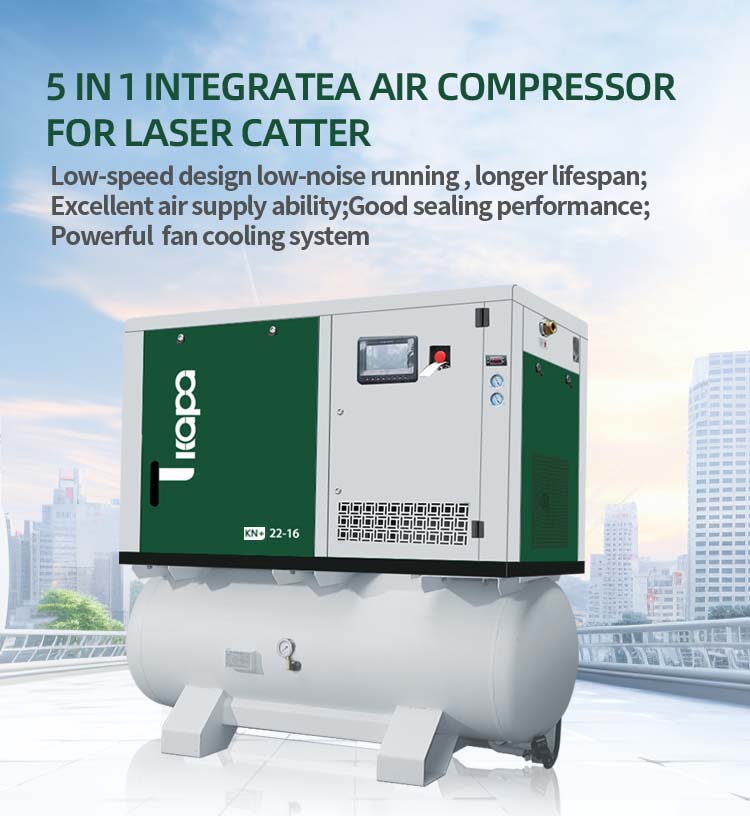What is the purpose of an Integrated Air Compressor?
Integrated air compressors have become indispensable tools across various industries, providing a reliable source of compressed air for numerous applications. In this article, we will explore the functionality, history, components, types, advantages, applications, selection criteria, maintenance, environmental impact, and future trends of integrated air compressors.
Understanding the Functionality of an Integrated Air Compressor
Integrated air compressors are mechanical devices that convert power, typically from an electric motor, diesel engine, or gasoline engine, into potential energy stored in pressurized air. This compressed air is then used for various purposes, including powering pneumatic tools, inflating tires, and supplying air for industrial processes.
Evolution and Development of Integrated Air Compressors
The journey of integrated air compressors dates back to the late 18th century. The first reciprocating air compressor was invented by George Medhurst in 1799. Since then, technological advancements have transformed these devices into more efficient and versatile machines, catering to the growing demands of industries worldwide. Over time, compressors have evolved to provide higher energy efficiency, greater reliability, and improved operational capabilities.
Key Components of an Integrated Air Compressor
An integrated air compressor consists of several crucial components, each designed to enhance the overall performance and reliability of the system:
Compressor Pump: The core of the system, responsible for compressing air.
Motor: Powers the compressor pump, typically using electrical or mechanical energy.
Air Tank: Stores the compressed air until it is needed for use.
Pressure Regulator: Controls the pressure of the air delivered to the system.
Pressure Gauge: Monitors the air pressure in the system.
Safety Valve: Prevents over-pressurization, ensuring safe operation.
Pipes and Fittings: Connect and direct the airflow between components.
Types of Integrated Air Compressors and Their Applications
Integrated air compressors come in different types, each designed for specific needs. These include:
Piston Compressors: Ideal for smaller-scale operations, offering high pressure and versatility.
Rotary Screw Compressors: Often used in larger industrial settings due to their higher efficiency and continuous output.
Centrifugal Compressors: Best suited for high-flow, large-volume applications such as in power plants or large factories.
Each type offers unique advantages based on factors like efficiency, power capacity, and operational demands.
Efficiency and Cost-Effectiveness
One of the standout features of 4-in-1 integrated air compressors is their high efficiency and cost-effectiveness. These systems convert electrical or mechanical energy into compressed air with minimal waste, making them a reliable and sustainable energy source. This reduces the need for manual labor and boosts productivity, ultimately cutting down operational costs across industries.
Diverse Industries and Uses
Integrated air compressors are crucial in a wide array of industries. Here are some key sectors where they are extensively used:
Pneumatic Tools
In construction, automotive repair, and manufacturing, integrated air compressors power pneumatic tools such as impact wrenches, nail guns, drills, and sanders. Compressed air offers the high force needed to operate these tools efficiently, making them indispensable for daily tasks.
Industrial Manufacturing
Integrated air compressors are essential in industrial manufacturing for powering pneumatic machinery, automated assembly lines, and control systems. They contribute to processes like pneumatic conveying, paint spraying, blow molding, and packaging, all of which require consistent and reliable air supply.
HVAC Systems
In heating, ventilation, and air conditioning (HVAC) systems, integrated air compressors provide the compressed air needed for pneumatic controls, actuators, and valves. This ensures proper airflow and regulation of temperature and humidity in residential and commercial buildings, enhancing comfort and energy efficiency.
Medical Applications
Integrated air compressors also play a vital role in healthcare, powering devices like dental drills, surgical tools, and respiratory equipment. These systems are critical in processes such as instrument sterilization, patient ventilation, and operation of pneumatic control systems, where precision and reliability are crucial for patient safety.
Conclusion
Integrated air compressors are indispensable in numerous industries, providing a reliable, efficient, and cost-effective source of compressed air for a wide range of applications. With continuous advancements in technology, these systems have become more versatile and efficient, driving innovation in industrial automation and sustainability. As industries continue to evolve, integrated air compressors will remain at the forefront of powering productivity and operational efficiency.


